Eco-Friendly Innovations for Cleaner Oceans
This article explores groundbreaking eco-friendly innovations aimed at reducing ocean pollution, preserving marine ecosystems, and promoting sustainable practices that contribute to cleaner oceans for future generations. As our planet faces unprecedented challenges due to climate change and pollution, the call for innovative solutions has never been louder. Imagine a world where our oceans are not just vast blue expanses but thriving ecosystems, teeming with life and free from the suffocating grip of plastic waste. This vision is becoming a reality through the power of innovation and community effort.
The development of biodegradable materials offers a sustainable alternative to plastics, significantly reducing waste in oceans and minimizing harm to marine life. Unlike conventional plastics that can take centuries to decompose, these materials break down naturally, helping to alleviate pollution. For instance, products made from plant-based materials can decompose within months, returning to the earth and leaving no toxic residue. This shift not only benefits marine ecosystems but also encourages industries to rethink their packaging and production methods. Imagine walking along a beach where you don't see plastic bottles or bags littering the sand—this is the future we can create with biodegradable options.
Innovative technologies for collecting marine waste, such as autonomous drones and specialized vessels, are being developed to efficiently remove plastic and debris from the ocean, protecting marine habitats. These advancements are akin to the superheroes of the ocean, swooping in to rescue our waters from the grips of pollution. With the ability to cover vast areas and operate in challenging conditions, these technologies are making significant strides in cleaning our oceans. For example, autonomous drones equipped with AI can identify and target areas with high concentrations of waste, ensuring that cleanup efforts are both effective and efficient.
Floating barriers are designed to capture and contain plastic waste in ocean currents, preventing it from spreading further. These barriers act like nets, strategically placed in high-traffic areas of the ocean where debris accumulates. They are crucial for targeted clean-up efforts in polluted areas, serving as a first line of defense against ocean pollution. By capturing waste before it can disperse, floating barriers play a vital role in protecting marine ecosystems and ensuring the health of our oceans.
Effective deployment strategies for floating barriers maximize their impact on waste collection, ensuring they are placed in high-traffic areas for ocean currents and debris accumulation. By analyzing oceanographic data, researchers can identify optimal locations for these barriers, significantly improving their efficiency. Imagine setting up a series of checkpoints in a busy city to catch litter before it spreads—this is the essence of strategic deployment in ocean cleanup.
Regular maintenance and sustainability practices are essential for the longevity of floating barriers, ensuring they remain effective and environmentally friendly throughout their operational life. Just like any tool, these barriers require care to function at their best. Routine inspections and repairs, coupled with sustainable materials for construction, ensure that these barriers can withstand the harsh ocean environment while continuing to serve their purpose.
Emerging innovative recycling solutions are converting ocean plastics into valuable materials, promoting a circular economy and reducing the demand for new plastic production. This process not only helps to clean our oceans but also creates new economic opportunities. For example, companies are now turning discarded plastic into fashionable clothing, building materials, and even eco-friendly packaging. This transformation of waste into resources is a game-changer, demonstrating that what was once seen as trash can become treasure.
Implementing eco-friendly fishing practices can significantly reduce bycatch and overfishing, ensuring the sustainability of fish populations and the health of ocean ecosystems. By adopting methods that prioritize the well-being of marine life, we can maintain the delicate balance of ocean ecosystems. For instance, selective fishing gear minimizes the capture of non-target species, allowing fish populations to thrive while supporting local economies.
The use of selective fishing gear minimizes the capture of non-target species, helping to protect marine biodiversity. This approach not only benefits the environment but also promotes sustainable fishing practices that can support local economies. Imagine a fishing net that only catches specific fish while letting others swim free—this is the essence of selective fishing.
Community-based management of fisheries empowers local fishermen to adopt sustainable practices, fostering stewardship of marine resources. By involving local communities in decision-making processes, we can ensure that fishing practices are not only sustainable but also culturally relevant and economically viable. This collaborative approach promotes a sense of ownership and responsibility towards marine resources, paving the way for long-term ecological balance in ocean environments.
Awareness and education campaigns play a crucial role in informing the public about ocean pollution and promoting eco-friendly behaviors. By raising awareness, we can inspire individuals to contribute to cleaner oceans. Think of it as planting seeds of knowledge that can grow into a forest of action—each person taking small steps to make a big difference.
School programs focusing on marine conservation educate young generations about the importance of protecting oceans. By instilling a sense of environmental responsibility from an early age, we can foster a culture of stewardship that lasts a lifetime. These programs often include hands-on activities, such as beach clean-ups and marine biology lessons, which engage students in meaningful ways.
Public engagement initiatives, such as beach clean-ups and workshops, inspire community participation in ocean conservation efforts. These activities not only help clean our beaches but also build a collective commitment to reducing pollution and preserving marine ecosystems. When communities come together to take action, the impact is profound—like a ripple effect spreading across the water.
Q: What are biodegradable materials?
A: Biodegradable materials are substances that can break down naturally in the environment, unlike traditional plastics that can take hundreds of years to decompose.
Q: How do floating barriers work?
A: Floating barriers capture and contain plastic waste in ocean currents, preventing it from spreading further and allowing for targeted clean-up efforts.
Q: Why is community-based management important?
A: Community-based management empowers local fishermen to adopt sustainable practices, fostering stewardship of marine resources and promoting long-term ecological balance.
Q: How can I contribute to ocean conservation?
A: You can contribute by participating in local clean-up events, reducing plastic use, and spreading awareness about the importance of protecting our oceans.
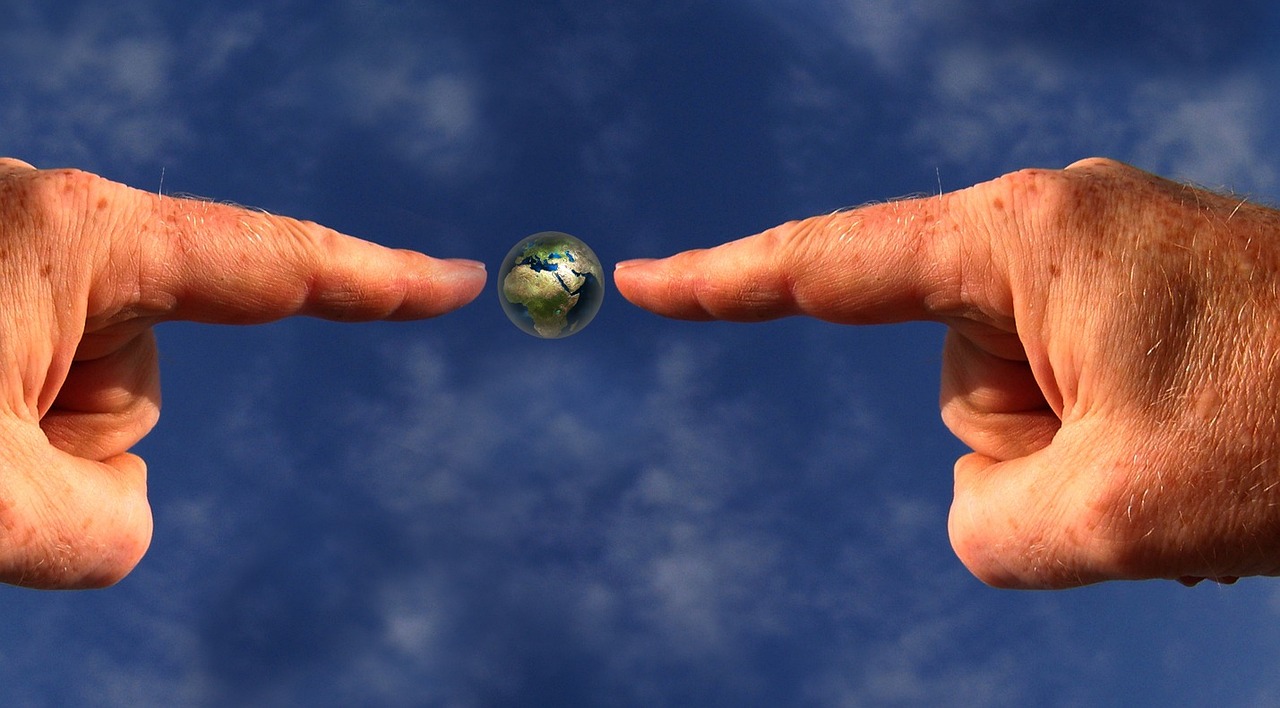
Biodegradable Materials
In our quest for a cleaner planet, have emerged as a beacon of hope, offering a sustainable alternative to traditional plastics that wreak havoc on our oceans. Imagine walking along a beach, only to be greeted by the sight of plastic bottles and bags littering the sand. It’s not just an eyesore; it’s a threat to marine life. Biodegradable materials, however, are designed to break down naturally, significantly reducing waste and minimizing the harmful impact on our precious marine ecosystems.
One of the most exciting aspects of biodegradable materials is their ability to decompose through natural processes. Unlike conventional plastics, which can take hundreds of years to break down, these innovative materials can disintegrate within a matter of months to a few years, depending on environmental conditions. This rapid decomposition helps alleviate the burden of pollution in our oceans, providing a cleaner habitat for marine creatures.
There are several types of biodegradable materials currently being developed and utilized, each with its unique properties and applications. Some of the most promising include:
- PLA (Polylactic Acid): Made from renewable resources like corn starch, PLA is commonly used in packaging and disposable cutlery.
- PHA (Polyhydroxyalkanoates): Produced by microbial fermentation of sugars or lipids, PHA is used in various applications, from packaging to medical devices.
- Starch-based plastics: These materials blend starch with other biodegradable polymers to create versatile products that decompose efficiently.
By integrating biodegradable materials into our daily lives, we can significantly reduce the amount of plastic waste that ends up in our oceans. For example, using biodegradable bags instead of traditional plastic bags can make a substantial difference. Imagine a world where every shopping trip contributes to a healthier ocean. It’s not just a dream; it's a possibility within our reach.
Furthermore, the adoption of biodegradable materials can stimulate the economy by creating new industries focused on sustainable practices. This shift not only promotes environmental responsibility but also offers job opportunities in research, manufacturing, and distribution sectors. The ripple effect of choosing biodegradable options extends far beyond just cleaner oceans; it fosters a culture of sustainability that can lead to long-lasting change.
However, it’s essential to recognize that biodegradable materials are not a silver bullet. They need to be part of a broader strategy that includes reducing overall consumption, improving waste management systems, and promoting recycling initiatives. We must also educate ourselves and others about the proper disposal of these materials, as they require specific conditions to decompose effectively. For instance, many biodegradable products need industrial composting facilities to break down properly, which may not be available in all areas.
In conclusion, embracing biodegradable materials represents a significant step towards reducing ocean pollution and preserving marine ecosystems. By making conscious choices in our consumption habits and advocating for sustainable practices, we can pave the way for cleaner oceans and a healthier planet for future generations.
| Question | Answer |
|---|---|
| What are biodegradable materials? | Biodegradable materials are substances that can be broken down by natural processes, typically by microorganisms, into non-toxic components. |
| How long do biodegradable materials take to decompose? | The decomposition time varies depending on the material and environmental conditions, ranging from a few months to a few years. |
| Are biodegradable materials a complete solution to ocean pollution? | No, while they help reduce waste, they should be part of a broader strategy that includes reducing consumption and improving waste management. |
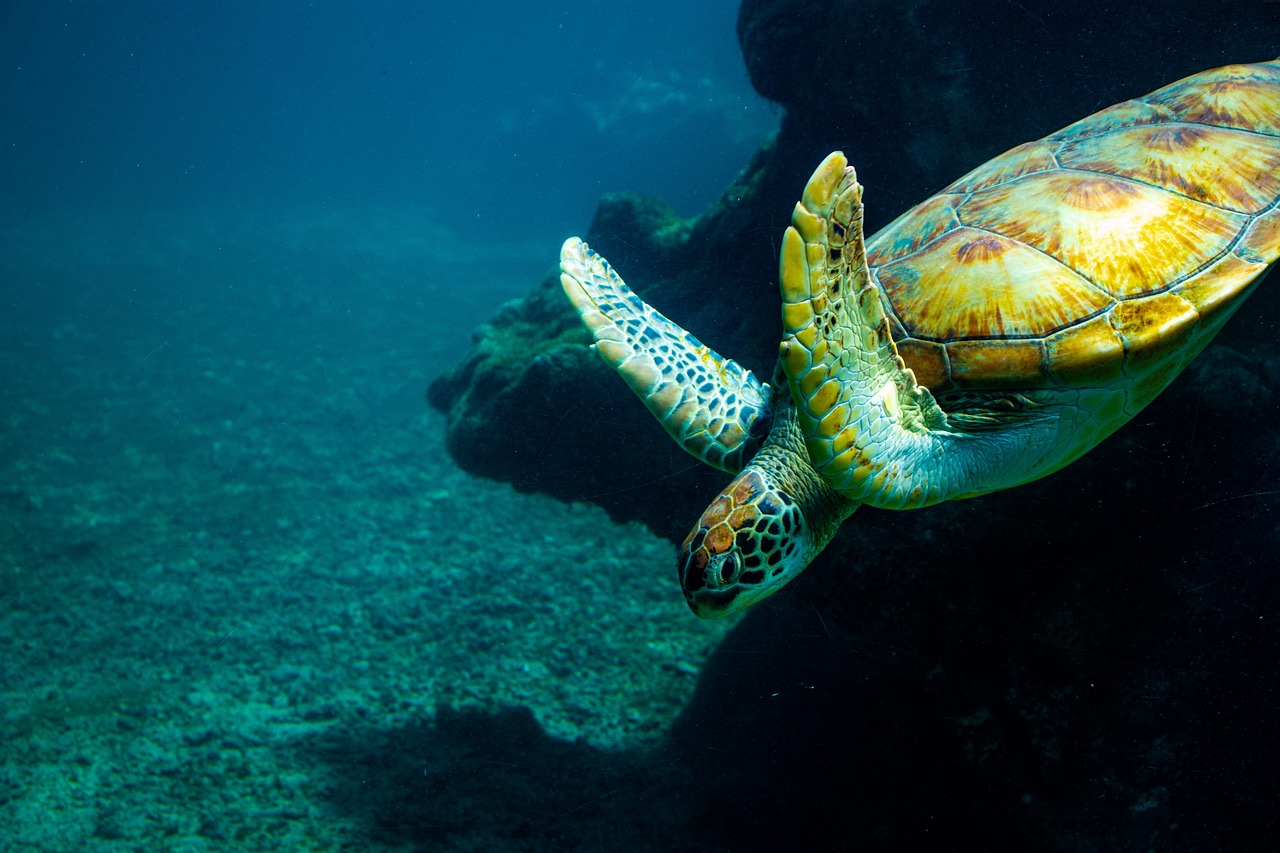
Marine Waste Collection Technologies
Innovative technologies are revolutionizing the way we approach the **critical issue** of marine waste collection. As our oceans become increasingly burdened with plastic and debris, the emergence of advanced solutions such as autonomous drones and specialized vessels offers a beacon of hope. These technologies are not just about cleaning up; they represent a **paradigm shift** in how we interact with our marine environments, prioritizing both efficiency and sustainability.
One of the most exciting developments in marine waste collection is the use of autonomous drones. These flying machines can cover vast areas of the ocean quickly, equipped with advanced sensors and imaging technology to identify and locate waste hotspots. Imagine a fleet of drones soaring above the waves, pinpointing areas where plastic accumulates, and then relaying that information to teams on the ground. This capability not only speeds up the collection process but also allows for more targeted interventions, ensuring that resources are used where they are needed most.
In addition to drones, specialized vessels designed specifically for marine waste collection are being deployed. These vessels are equipped with state-of-the-art technology that allows them to efficiently scoop up debris from the water's surface. For example, some boats utilize **conveyor belt systems** that can sift through the water, separating waste from marine life. This technology is crucial, as it minimizes the potential harm to fish and other sea creatures during the collection process.
Another innovative approach involves the use of **floating barriers** that capture and contain plastic waste in ocean currents. These barriers act as a net, preventing debris from spreading further and allowing for targeted clean-up efforts in polluted areas. They are particularly effective in high-traffic zones where plastic waste tends to accumulate, such as near river mouths or coastal regions.
To maximize the impact of floating barriers, effective deployment strategies are essential. Understanding ocean currents and debris movement is key to placing these barriers in the right locations. By analyzing data and using predictive models, organizations can ensure that barriers are situated in areas where they will collect the most waste. This strategic placement not only enhances the efficiency of waste collection but also reduces operational costs.
Regular maintenance is vital for the longevity of floating barriers. Without proper upkeep, these structures can become less effective over time. Organizations involved in marine conservation are developing sustainability practices to ensure that these barriers remain functional and environmentally friendly throughout their operational life. This includes routine inspections, repairs, and the use of **eco-friendly materials** in the construction of barriers.
As we look to the future, the integration of these technologies presents a **promising solution** to the ocean pollution crisis. However, it is crucial that we continue to invest in research and development to enhance these systems further. By combining cutting-edge technology with community engagement and education, we can foster a culture of stewardship for our oceans, ensuring cleaner seas for generations to come.
- What are marine waste collection technologies? These are innovative tools and systems designed to identify, collect, and remove waste from the ocean, including drones and specialized vessels.
- How do autonomous drones help in waste collection? Autonomous drones can quickly cover large areas, identify waste hotspots, and relay information for targeted clean-up efforts.
- What are floating barriers? Floating barriers are structures designed to capture and contain plastic waste in ocean currents, preventing it from spreading further.
- Why is maintenance important for floating barriers? Regular maintenance ensures that barriers remain effective and environmentally friendly throughout their operational life.
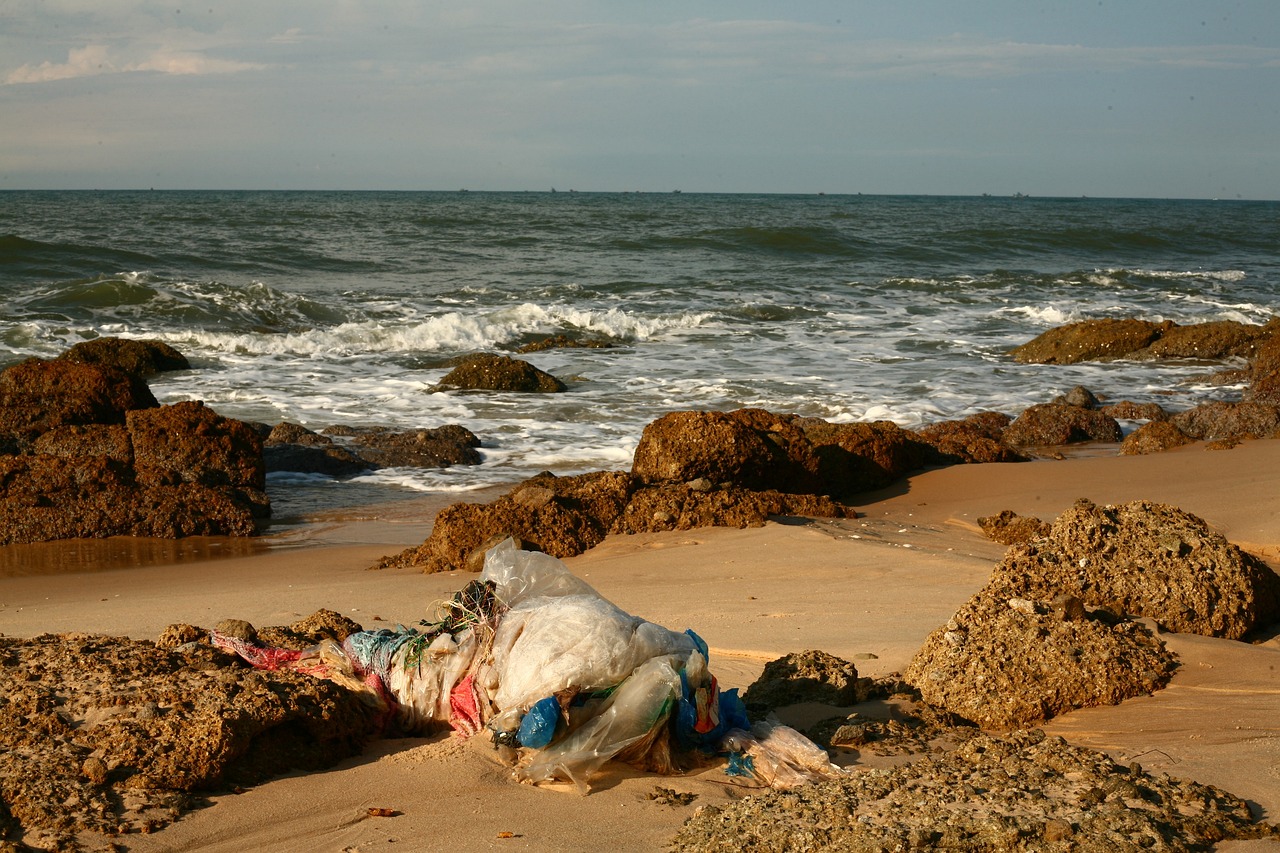
Floating Barriers
Floating barriers are an innovative solution designed to tackle the ever-growing problem of plastic waste in our oceans. These remarkable structures act like nets, capturing and containing plastic debris as it drifts with ocean currents. Imagine a giant fishing net, but instead of catching fish, it’s designed to catch the harmful waste that threatens marine life and ecosystems. The beauty of floating barriers lies in their ability to function without impeding marine traffic or wildlife, making them a practical choice for ocean cleanup efforts.
One of the most exciting aspects of floating barriers is their strategic design. They are typically placed in high-traffic areas where ocean currents converge, effectively trapping plastic waste before it can spread further. This targeted approach not only enhances the efficiency of cleanup operations but also minimizes the environmental impact of the barriers themselves. For example, a floating barrier deployed in a busy shipping lane can collect a significant amount of debris, preventing it from reaching pristine areas of the ocean.
Moreover, the maintenance and sustainability of these barriers are crucial for their long-term effectiveness. Regular inspections and cleanups are necessary to ensure that they remain functional and do not become a source of pollution themselves. Many organizations involved in ocean conservation emphasize the importance of using eco-friendly materials in the construction of floating barriers. This commitment to sustainability ensures that while we’re cleaning our oceans, we’re not inadvertently adding to the problem.
In terms of impact, floating barriers can significantly reduce the amount of plastic entering the ocean's ecosystem. According to recent studies, it is estimated that around 8 million metric tons of plastic waste enter the oceans each year. By strategically deploying these barriers in key locations, we can capture a substantial portion of this waste, preventing it from harming marine life. The captured debris can then be processed and recycled, contributing to a circular economy and reducing the demand for new plastic production.
As we look towards the future, the integration of technology with floating barriers offers even more potential. Innovations such as autonomous drones can be used to monitor the effectiveness of these barriers and provide real-time data on the types and quantities of waste being collected. This data is invaluable for refining cleanup strategies and enhancing the overall efficiency of marine waste management efforts.
In summary, floating barriers are a vital tool in the battle against ocean pollution. They not only help in capturing the plastic waste that threatens marine ecosystems but also promote sustainable practices that can lead to cleaner oceans for future generations. By investing in and supporting these innovative solutions, we can take significant strides towards preserving the beauty and health of our oceans.
- How do floating barriers work? Floating barriers use a combination of buoyancy and netting to capture plastic waste as it flows with ocean currents.
- Are floating barriers harmful to marine life? No, they are designed to minimize impact on marine life and do not impede the movement of fish or other sea creatures.
- What happens to the waste collected by floating barriers? The collected waste is typically removed and sent for recycling or proper disposal, contributing to a circular economy.
- Where are floating barriers most effective? They are most effective in areas with high concentrations of plastic waste, such as coastal regions, river mouths, and busy shipping lanes.
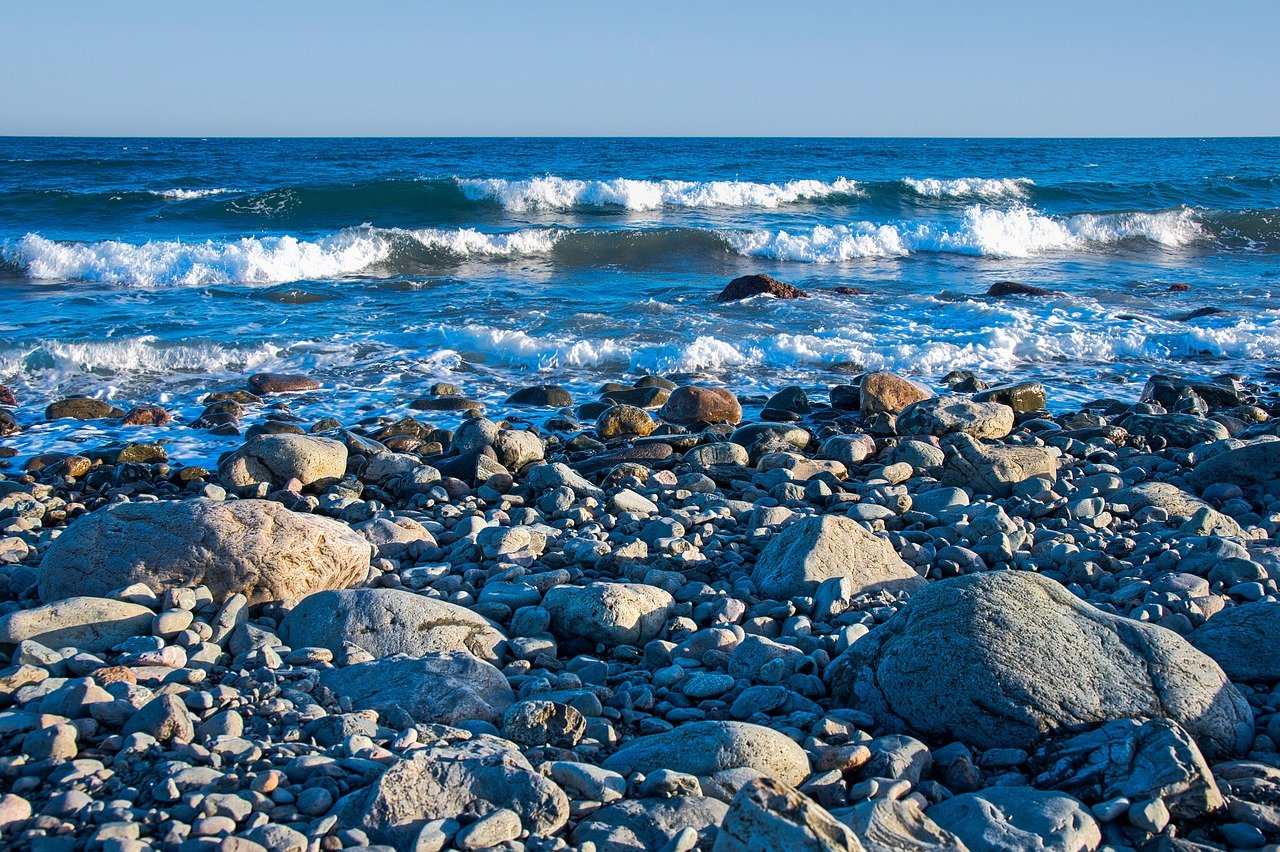
Deployment Strategies
When it comes to tackling the colossal issue of ocean pollution, effective for floating barriers are absolutely crucial. Imagine these barriers as the safety nets of our oceans, designed to catch the debris before it can spread further and cause even more damage. But how do we ensure that these nets are placed in the right spots? The answer lies in understanding ocean currents, debris patterns, and the areas most affected by pollution.
One of the primary strategies involves mapping high-traffic areas where plastic waste tends to accumulate. This requires a combination of satellite imagery, oceanographic data, and real-world observations from marine scientists. By pinpointing these hotspots, we can deploy barriers in locations where they will have the maximum impact. For example, regions near river mouths often serve as major entry points for waste flowing into the ocean. By strategically placing barriers in these areas, we can intercept a significant amount of debris before it disperses into the open sea.
Another key aspect of deployment is the use of real-time monitoring technologies. These technologies allow us to track the effectiveness of barriers and make necessary adjustments on the fly. Equipped with sensors and GPS, floating barriers can provide data on the volume and type of waste being collected. This information not only helps in assessing the success of the deployment but also aids in planning future operations.
Moreover, collaborating with local communities and organizations can enhance the deployment strategies. Engaging fishermen, environmental groups, and local governments fosters a sense of ownership and responsibility. These stakeholders often have invaluable insights into the local marine environment and can help identify optimal locations for barrier placement. By working together, we can create a more comprehensive and effective approach to ocean cleanup.
Finally, it's essential to consider the sustainability of these deployment strategies. Floating barriers must be designed to withstand harsh marine conditions while minimizing their own environmental impact. This means selecting materials that are durable yet eco-friendly, ensuring that the barriers themselves do not contribute to ocean pollution. Regular maintenance checks are necessary to keep the barriers functioning optimally, which includes removing collected debris and repairing any damage caused by weather or marine life.
In summary, the deployment strategies for floating barriers are multi-faceted and require a blend of scientific research, community involvement, and sustainable practices. By focusing on high-traffic areas, utilizing real-time monitoring, collaborating with local stakeholders, and ensuring the sustainability of the barriers, we can significantly enhance our efforts in cleaning up our oceans. The journey toward cleaner oceans is a collective one, and with the right strategies in place, we can make a substantial difference.
- What are floating barriers?
Floating barriers are structures designed to capture and contain plastic waste in ocean currents, preventing it from spreading further.
- How do we determine the best locations for deployment?
By using satellite imagery and oceanographic data, we can identify hotspots where plastic waste tends to accumulate, such as near river mouths.
- What materials are used to make these barriers?
Barriers are made from durable, eco-friendly materials that can withstand harsh marine conditions without contributing to pollution.
- How is the effectiveness of the barriers monitored?
Real-time monitoring technologies equipped with sensors and GPS track the volume and type of waste collected, allowing for adjustments as needed.

Maintenance and Sustainability
To ensure that floating barriers remain effective in capturing marine debris, regular maintenance is absolutely essential. Just like a car needs regular oil changes and tire rotations, these barriers require consistent checks and repairs to function optimally. This not only involves physical inspections but also necessitates the removal of the collected waste. Imagine a sponge soaking up water; if you don’t wring it out, it will eventually overflow and cease to be effective. Similarly, if floating barriers are not cleared regularly, they can become overwhelmed with debris, reducing their ability to capture additional waste.
Moreover, sustainability practices must be integrated into the maintenance routine. This means using environmentally friendly materials for repairs and ensuring that any waste collected is disposed of or recycled properly. For instance, if a barrier is damaged, using biodegradable materials for its repair can minimize any additional environmental impact. It's a cycle of care that reflects our commitment to preserving marine ecosystems.
Incorporating technology can also enhance maintenance efficiency. For example, using drones for aerial inspections can help identify areas where barriers may be underperforming or require immediate attention. This proactive approach allows for timely interventions, ensuring that these barriers remain a robust solution in the fight against ocean pollution.
Ultimately, the longevity and effectiveness of floating barriers hinge on a well-structured maintenance and sustainability plan. By committing to these practices, we not only protect our oceans today but also pave the way for a cleaner, healthier marine environment for future generations. This is not just a responsibility; it’s a shared mission that calls for the collaboration of governments, organizations, and individuals alike.
- Why are floating barriers important for ocean cleanup? They capture plastic waste before it can spread further into marine environments, allowing for targeted clean-up efforts.
- How often should floating barriers be maintained? Regular maintenance should be conducted at least once a month, or more frequently depending on the amount of debris collected.
- What materials are used for the construction of floating barriers? Many barriers are made from durable, weather-resistant materials, and there is a growing trend to use biodegradable options for repairs.
- Can community members participate in the maintenance of floating barriers? Absolutely! Community engagement is vital, and local volunteers can help with clean-up efforts and monitoring.
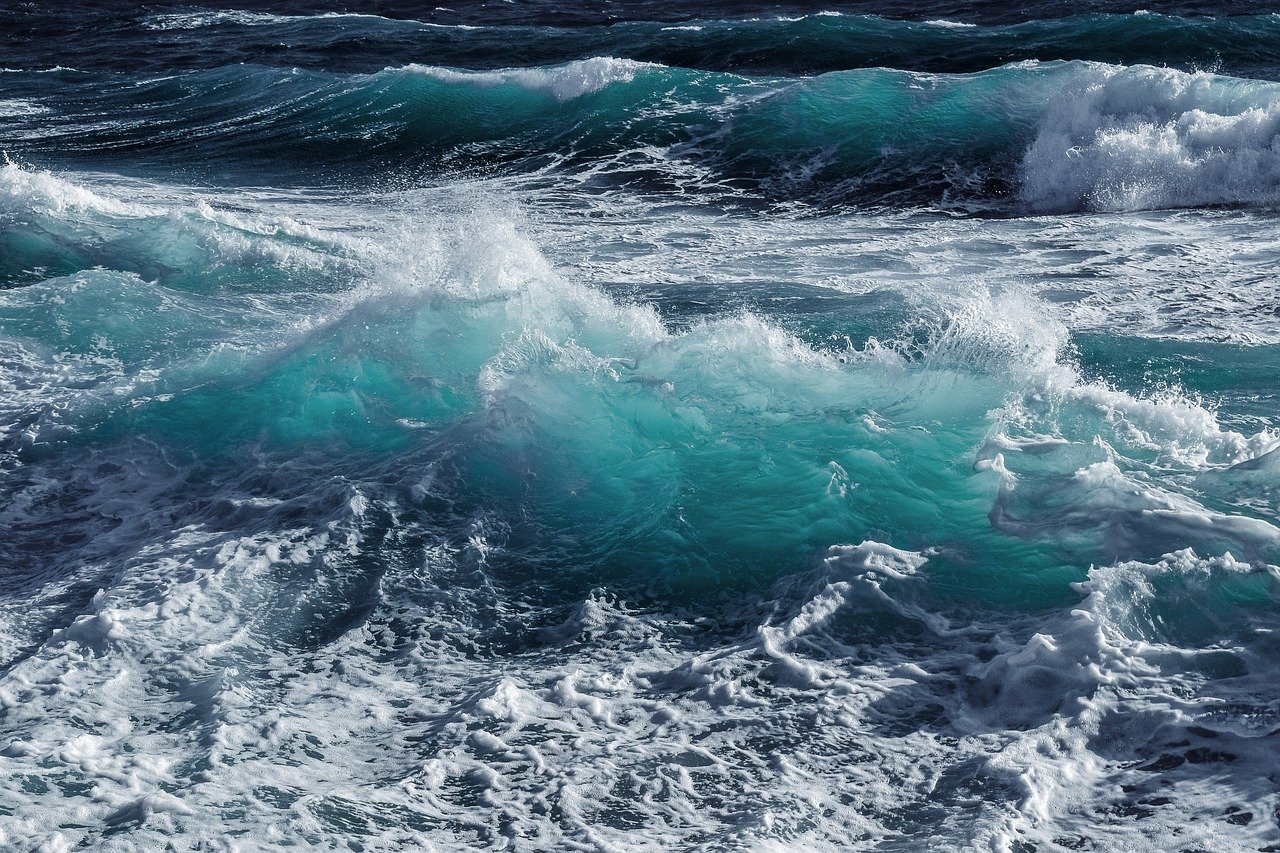
Innovative Recycling Solutions
This article explores groundbreaking eco-friendly innovations aimed at reducing ocean pollution, preserving marine ecosystems, and promoting sustainable practices that contribute to cleaner oceans for future generations.
The development of biodegradable materials offers a sustainable alternative to plastics, reducing waste in oceans and minimizing harm to marine life. These materials decompose naturally, helping to alleviate pollution.
Innovative technologies for collecting marine waste, such as autonomous drones and specialized vessels, are being developed to efficiently remove plastic and debris from the ocean, protecting marine habitats.
Floating barriers are designed to capture and contain plastic waste in ocean currents, preventing it from spreading further. These barriers are crucial for targeted clean-up efforts in polluted areas.
Effective deployment strategies for floating barriers maximize their impact on waste collection, ensuring they are placed in high-traffic areas for ocean currents and debris accumulation.
Regular maintenance and sustainability practices are essential for the longevity of floating barriers, ensuring they remain effective and environmentally friendly throughout their operational life.
In the quest for cleaner oceans, are emerging as a beacon of hope. These initiatives aim to convert ocean plastics into valuable materials, promoting a circular economy that not only reduces waste but also lessens the demand for new plastic production. Imagine turning trash into treasure! This transformation not only helps protect marine environments but also creates economic opportunities.
One of the most exciting developments in this area is the use of advanced technologies to break down plastics into their fundamental components. These processes can yield raw materials that can be reused in manufacturing, effectively giving plastic a second life. For example, companies are now employing chemical recycling methods that can process a wider variety of plastics than traditional recycling systems. This is crucial because, as we know, not all plastics are created equal, and many end up in our oceans due to inadequate recycling methods.
Additionally, some organizations are focusing on community-driven recycling programs that engage local populations in the collection and processing of ocean plastics. These initiatives not only help clean up the oceans but also educate communities about the importance of sustainable practices. By involving local fishermen and coastal communities, these programs foster a sense of ownership and responsibility towards marine conservation.
Here are a few key points about innovative recycling solutions:
- Technology-Driven Approaches: Utilizing advanced technologies to convert waste into reusable materials.
- Community Engagement: Involving local communities in recycling efforts to enhance awareness and participation.
- Economic Opportunities: Creating jobs and new markets through the recycling of ocean plastics.
Ultimately, these innovative recycling solutions not only aim to tackle the issue of ocean pollution but also inspire a shift in how we perceive waste. Instead of viewing plastics as disposable, the focus is on their potential as a resource. This change in mindset is essential for fostering a sustainable future where our oceans can thrive once again.
Implementing eco-friendly fishing practices can significantly reduce bycatch and overfishing, ensuring the sustainability of fish populations and the health of ocean ecosystems.
The use of selective fishing gear minimizes the capture of non-target species, helping to protect marine biodiversity while allowing for sustainable fishing practices that support local economies.
Community-based management of fisheries empowers local fishermen to adopt sustainable practices, fostering stewardship of marine resources and promoting long-term ecological balance in ocean environments.
Awareness and education campaigns play a crucial role in informing the public about ocean pollution and promoting eco-friendly behaviors, encouraging individuals to contribute to cleaner oceans.
School programs focusing on marine conservation educate young generations about the importance of protecting oceans, fostering a culture of environmental responsibility from an early age.
Public engagement initiatives, such as beach clean-ups and workshops, inspire community participation in ocean conservation efforts, building a collective commitment to reducing pollution and preserving marine ecosystems.
Q: What are biodegradable materials?
A: Biodegradable materials are substances that can decompose naturally through the action of microorganisms, reducing waste and pollution in our oceans.
Q: How do floating barriers work?
A: Floating barriers capture and contain plastic waste in ocean currents, preventing it from spreading and allowing for targeted clean-up efforts.
Q: What is a circular economy?
A: A circular economy is an economic system aimed at minimizing waste and making the most of resources by reusing, recycling, and repurposing materials.
Q: How can I get involved in ocean conservation?
A: You can participate in local beach clean-ups, support eco-friendly products, and educate others about the importance of protecting our oceans.
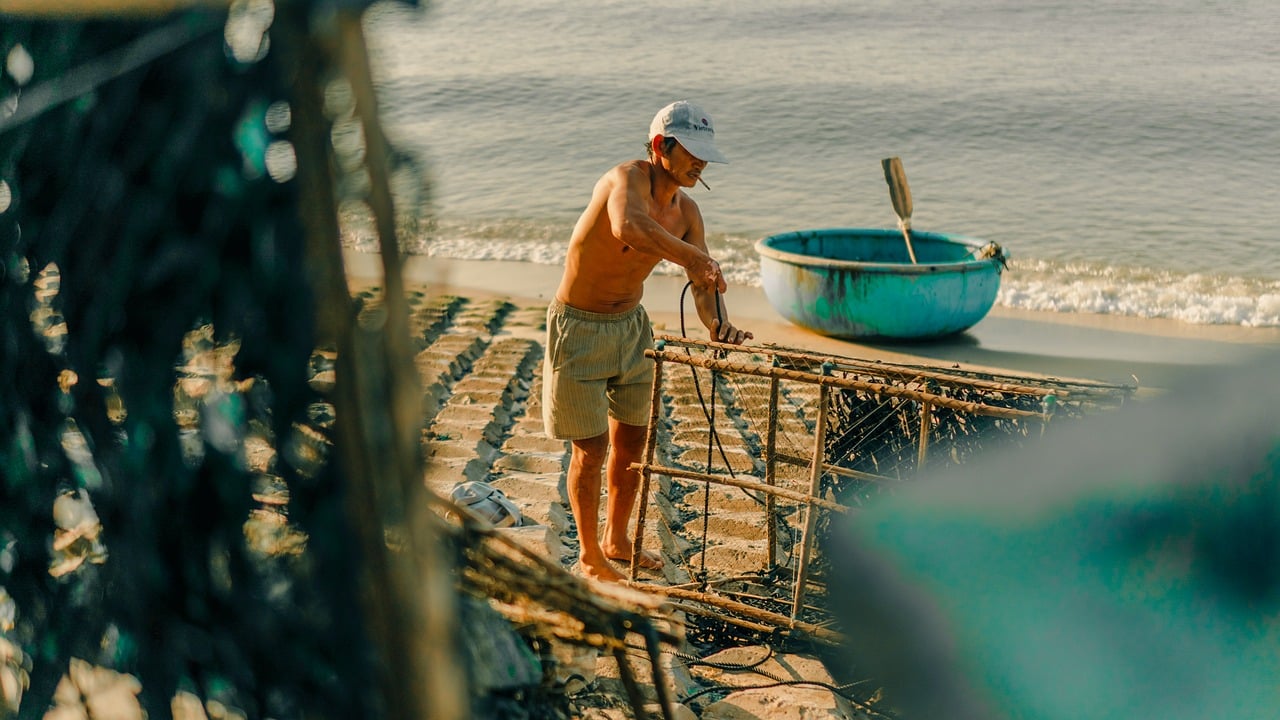
Eco-Friendly Fishing Practices
When we think about the vastness of our oceans, it's easy to overlook the impact that fishing practices have on marine ecosystems. However, implementing can make a significant difference in preserving fish populations and maintaining the health of ocean habitats. These practices not only protect marine life but also ensure that fishing remains a sustainable livelihood for generations to come.
One of the most effective methods to reduce the negative impact of fishing is the use of selective fishing gear. This type of gear is designed to catch only the target species, minimizing the unintended capture of non-target species, known as bycatch. For instance, traditional nets can ensnare a variety of marine animals, including endangered species, which can lead to drastic declines in their populations. In contrast, selective gear, such as circle hooks and fish traps, allows fishermen to catch fish while significantly reducing bycatch. This not only helps in maintaining biodiversity but also supports the recovery of overfished stocks.
Moreover, community-based management of fisheries is gaining traction as a powerful approach to promote sustainable practices. By empowering local fishermen to take charge of their resources, communities can implement regulations that reflect their unique environmental conditions and cultural practices. This localized approach fosters a sense of stewardship and responsibility among fishermen, encouraging them to adopt methods that protect marine resources. For example, community-led initiatives might include setting catch limits, protecting spawning areas, or establishing marine protected areas (MPAs) where fishing is restricted, allowing ecosystems to recover.
In addition to these practices, education plays a crucial role in promoting eco-friendly fishing. Fishermen who are informed about sustainable practices are more likely to adopt them. Workshops and training sessions can provide valuable information on the benefits of sustainable fishing methods and the importance of preserving marine ecosystems. Furthermore, engaging with local communities through outreach programs can help raise awareness about the impact of overfishing and the importance of biodiversity. When fishermen understand the long-term benefits of sustainable practices, they are more likely to embrace changes that lead to healthier oceans.
In conclusion, eco-friendly fishing practices are not just a trend; they're a necessity for the future of our oceans. By adopting selective fishing gear, empowering local communities, and promoting education, we can work towards a more sustainable fishing industry that prioritizes the health of marine ecosystems. As we continue to innovate and adapt, it's crucial to remember that every small change contributes to the larger goal of preserving our oceans for future generations.
- What are eco-friendly fishing practices?
Eco-friendly fishing practices refer to methods that minimize environmental impact, protect marine biodiversity, and ensure sustainable fish populations. - How does selective fishing gear help the environment?
Selective fishing gear reduces bycatch, which helps protect non-target species and maintains the balance of marine ecosystems. - What is community-based management of fisheries?
Community-based management empowers local fishermen to manage their resources sustainably, promoting stewardship and long-term ecological balance. - Why is education important in sustainable fishing?
Education helps fishermen understand the benefits of sustainable practices, encouraging them to adopt methods that protect marine ecosystems.
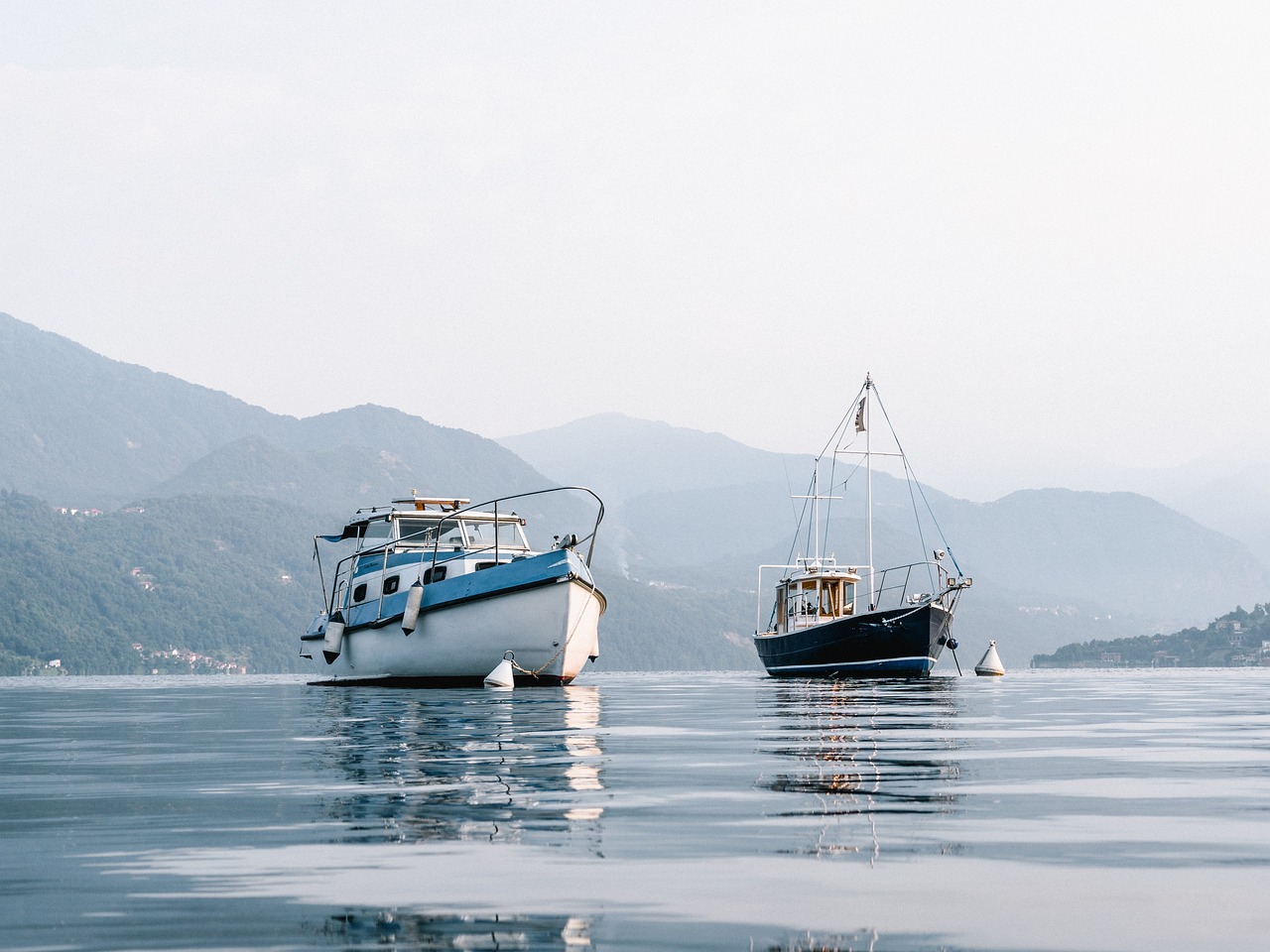
Selective Fishing Gear
In the quest for sustainable fishing practices, has emerged as a game-changer. This innovative approach focuses on minimizing the capture of non-target species, often referred to as bycatch, which has been a significant issue in traditional fishing methods. By employing specially designed nets, traps, and hooks, fishermen can significantly reduce the unintended catch of juvenile fish and other marine creatures, thereby fostering a healthier ecosystem.
Imagine a fishing net that only allows certain species to enter while keeping others at bay. This is the essence of selective fishing gear. It’s akin to using a sieve to separate grains from sand; the goal is to retain only what is beneficial while letting the rest pass through unharmed. Not only does this technique help in protecting marine biodiversity, but it also supports the sustainable management of fish populations, ensuring that future generations can enjoy the bounty of our oceans.
There are various types of selective fishing gear currently being utilized, each designed with specific goals in mind:
- Circle Hooks: These hooks are designed to catch fish in the lip rather than the throat or gut, reducing the chance of injury and increasing the likelihood of survival for released fish.
- Bycatch Reduction Devices (BRDs): These devices are incorporated into trawl nets to allow non-target species to escape while retaining the target catch.
- Modified Traps: Traps can be engineered to allow smaller fish to escape, ensuring that only mature fish are captured.
Furthermore, the implementation of selective fishing gear not only benefits the environment but also enhances the economic viability of fisheries. By maintaining healthy fish populations, fishermen can experience more consistent catches over time, leading to increased profits and reduced effort in the long run. This creates a win-win situation where both the ocean and the fishing community thrive.
However, transitioning to selective fishing gear requires education and training for fishermen. It’s essential for them to understand how to effectively use these tools and the long-term benefits they offer. Collaboration among governments, NGOs, and local fishing communities is crucial to facilitate this transition. By providing resources and support, we can encourage the adoption of these sustainable practices across the globe.
In conclusion, selective fishing gear represents a pivotal step towards sustainable fishing. By reducing bycatch and promoting the health of marine ecosystems, we can ensure that our oceans remain vibrant and productive for generations to come. It’s time to embrace these innovations and support our fishermen in their efforts to fish responsibly.
Q: What is selective fishing gear?
A: Selective fishing gear refers to specialized equipment designed to minimize the capture of non-target species, thereby reducing bycatch and promoting sustainable fishing practices.
Q: Why is reducing bycatch important?
A: Reducing bycatch is crucial for maintaining marine biodiversity and ensuring the sustainability of fish populations, which supports the overall health of ocean ecosystems.
Q: How can fishermen be encouraged to use selective fishing gear?
A: Education and training programs, along with support from governments and NGOs, can help fishermen understand the benefits of selective fishing gear and how to effectively implement these practices.
Q: What are some examples of selective fishing gear?
A: Examples include circle hooks, bycatch reduction devices (BRDs), and modified traps that allow non-target species to escape.
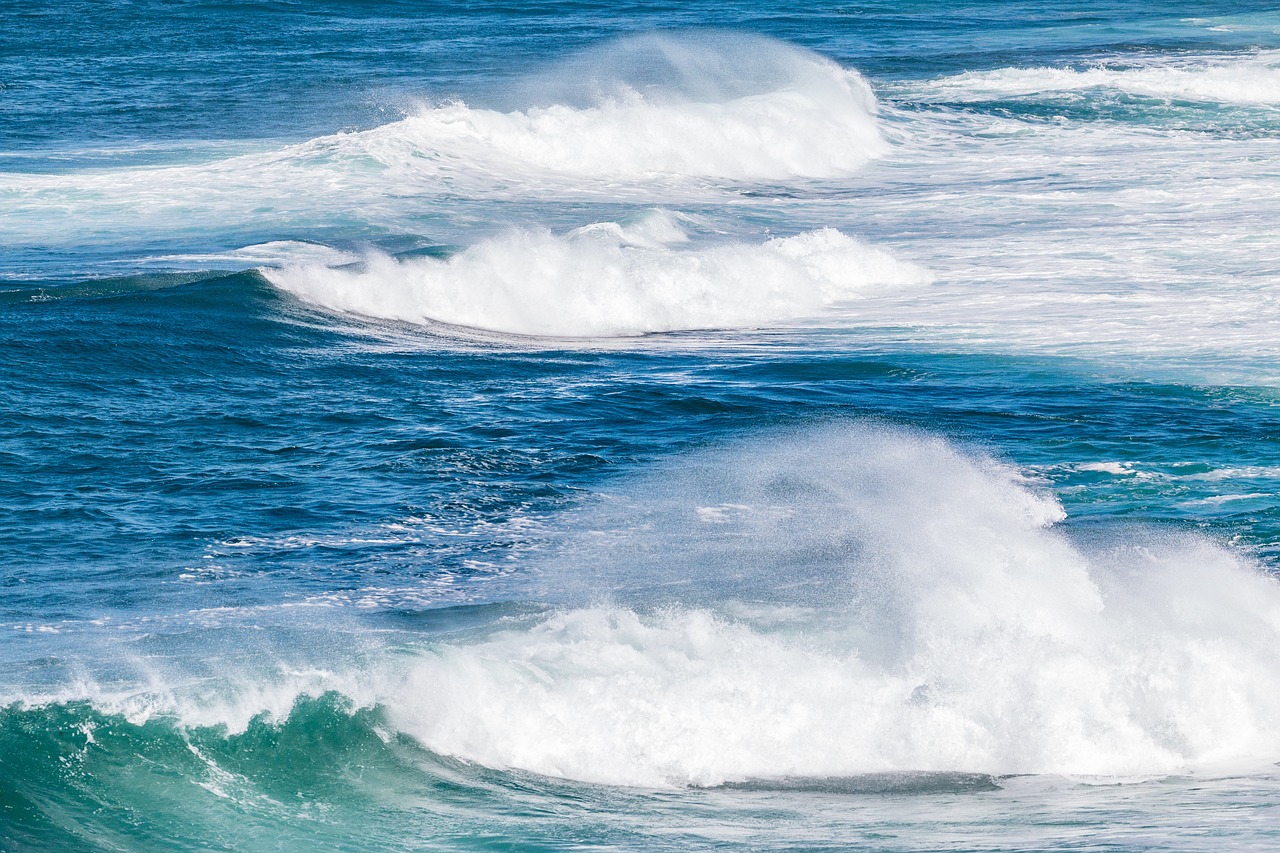
Community-Based Management
When it comes to protecting our oceans, one of the most powerful tools we have is . This approach empowers local fishermen and coastal communities to take an active role in managing their marine resources. Imagine a world where the people who rely on the ocean for their livelihoods are also the stewards of its health. This is not just a dream; it’s a reality that is being fostered in various regions around the globe.
Community-based management involves local stakeholders in decision-making processes, allowing them to develop sustainable fishing practices tailored to their unique environments. By tapping into the knowledge and traditions of local communities, we can create strategies that not only protect fish populations but also promote economic stability for those who depend on fishing. This method fosters a sense of ownership and responsibility, making it more likely that communities will adhere to regulations and practices that benefit both their livelihoods and the marine ecosystem.
For instance, in many coastal areas, fishermen have begun to implement traditional ecological knowledge alongside modern science. This blend of old and new can lead to innovative solutions that better address local challenges. Here are some key aspects of community-based management that highlight its effectiveness:
- Local Knowledge: Communities often possess detailed knowledge about their local ecosystems, which can inform sustainable practices.
- Adaptive Management: Local managers can quickly adapt to changes in fish populations or environmental conditions, ensuring that fishing practices remain sustainable.
- Economic Incentives: When communities are involved in management, they are more likely to support conservation efforts that also provide economic benefits, such as eco-tourism.
Moreover, community-based management can lead to the establishment of marine protected areas (MPAs). These areas are designated for conservation, allowing fish populations to recover and ecosystems to thrive. Local communities play a crucial role in monitoring and enforcing regulations within these MPAs, making them essential partners in conservation efforts. The results can be astounding—when fish stocks are allowed to replenish, not only do local fishermen benefit from healthier catches, but the entire marine ecosystem flourishes.
However, for community-based management to be successful, it requires strong support from governments and non-governmental organizations. This support can come in the form of funding, training, and resources. By investing in local communities, we can build a network of informed and empowered individuals who are dedicated to preserving their marine environments.
In conclusion, community-based management represents a holistic approach to ocean conservation. It’s about more than just protecting fish; it’s about creating a sustainable future for both the ocean and the communities that depend on it. When we empower local stakeholders, we not only enhance their livelihoods but also ensure the health of our oceans for generations to come.
- What is community-based management? Community-based management involves local communities taking an active role in managing their marine resources, ensuring sustainable practices that benefit both the environment and local economies.
- How does community-based management benefit the ocean? It leads to better adherence to sustainable practices, the establishment of marine protected areas, and the incorporation of local knowledge into conservation efforts.
- What role do governments play in community-based management? Governments can provide support through funding, resources, and training, enabling local communities to effectively manage their marine environments.
- Can community-based management improve fish populations? Yes, by implementing sustainable practices and creating marine protected areas, fish populations can recover, leading to healthier ecosystems and improved catches for local fishermen.

Awareness and Education Campaigns
Awareness and education campaigns are essential in the fight against ocean pollution. They serve as a powerful tool to inform the public about the dire state of our oceans and the pressing need for action. Imagine a world where every person understands the impact of their daily choices on marine ecosystems. This is the vision that drives these campaigns. By raising awareness, we can empower individuals to make informed decisions that contribute to cleaner oceans.
One of the most effective ways to instill this understanding is through school programs. These initiatives are designed to educate young minds about marine conservation and the importance of protecting our oceans. By incorporating marine biology and environmental science into school curricula, we can cultivate a generation of environmentally conscious citizens. Schools can organize field trips to local beaches or marine reserves, allowing students to witness the beauty of the ocean firsthand and understand the threats it faces. This experiential learning can be transformative, igniting a passion for marine conservation in young hearts.
In addition to school programs, public engagement initiatives play a crucial role in fostering community involvement. Activities such as beach clean-ups, workshops, and informational sessions not only raise awareness but also provide a platform for individuals to take action. When communities come together to clean up their local beaches, they not only remove harmful debris but also build a sense of camaraderie and shared responsibility. These initiatives create a ripple effect, encouraging participants to spread the word about the importance of keeping our oceans clean.
Moreover, social media has become a powerful ally in these campaigns. Platforms like Instagram and Twitter allow organizations to reach a broader audience, sharing eye-catching visuals and compelling stories that highlight the plight of our oceans. Engaging content—like videos of marine wildlife struggling with plastic pollution—can evoke strong emotional responses, prompting viewers to rethink their habits. By using hashtags and viral challenges, these campaigns can mobilize communities and inspire action on a larger scale.
To effectively gauge the impact of these campaigns, organizations often conduct surveys and studies. These assessments not only measure changes in public awareness but also help tailor future initiatives. For instance, if a survey reveals that many people are unaware of the effects of microplastics, campaigns can pivot to focus on this issue, providing targeted education on how to reduce plastic use in daily life.
In summary, awareness and education campaigns are vital for protecting our oceans. They empower individuals with knowledge and inspire collective action. By investing in educational initiatives and engaging the public, we can create a culture of stewardship that prioritizes the health of our marine environments. Together, we can ensure that future generations inherit a cleaner, healthier ocean.
| Question | Answer |
|---|---|
| What are awareness and education campaigns? | These campaigns aim to inform the public about ocean pollution and promote eco-friendly behaviors. |
| How do school programs contribute to marine conservation? | They educate young students about the importance of protecting oceans and foster a culture of environmental responsibility. |
| What role does social media play in these campaigns? | Social media helps spread awareness quickly and engage a larger audience with compelling content. |
| How can I get involved in public engagement initiatives? | You can participate in beach clean-ups, workshops, and other community events focused on ocean conservation. |

School Programs
School programs focusing on marine conservation are crucial in shaping the minds of young individuals about the significance of protecting our oceans. Imagine a classroom where students are not just learning about marine life from textbooks, but are actively engaged in hands-on activities that bring the wonders of the ocean right to their fingertips. These programs serve as a bridge, connecting students to the marine environment and instilling a sense of responsibility towards it. By integrating fun and interactive learning experiences, schools can foster a culture of environmental stewardship among children, encouraging them to become advocates for ocean conservation.
One effective approach is incorporating field trips to local beaches or marine sanctuaries. These excursions allow students to witness the beauty and fragility of marine ecosystems firsthand. They can participate in activities such as beach clean-ups, where they not only help remove debris but also learn about the impact of pollution on marine life. Such experiences are invaluable as they leave a lasting impression, making the issue of ocean conservation personal and relatable.
Furthermore, schools can implement curriculum modules that cover topics such as marine biology, oceanography, and the effects of climate change. By using engaging teaching methods, like project-based learning and multimedia resources, educators can spark students' curiosity and passion for the oceans. For instance, students might work on projects that involve researching local marine species, understanding their habitats, and presenting their findings to the class. This not only enhances their knowledge but also develops critical thinking and presentation skills.
To ensure the effectiveness of these programs, schools can collaborate with local environmental organizations and marine experts. This partnership can provide resources, guest speakers, and even funding for special projects. Involving the community in these educational efforts not only enriches the learning experience but also creates a network of support for ongoing conservation initiatives. The more students know, the more likely they are to take action, whether it’s advocating for policy changes or participating in local conservation efforts.
Ultimately, the goal of school programs centered around marine conservation is to create a generation that is not only aware of the challenges facing our oceans but is also equipped to tackle them. By nurturing a sense of wonder and responsibility, these educational initiatives can lead to a profound shift in how future generations interact with the marine environment. As we empower young minds with knowledge and experience, we pave the way for a cleaner, healthier ocean for all.
- What is the importance of marine conservation education in schools?
Marine conservation education helps students understand the ecological significance of oceans and the impact of human activities, fostering a sense of responsibility towards protecting marine ecosystems. - How can schools implement effective marine conservation programs?
Schools can collaborate with local environmental organizations, incorporate hands-on activities like beach clean-ups, and develop engaging curriculum modules focused on marine science. - What role do field trips play in marine conservation education?
Field trips provide students with firsthand experiences of marine environments, making the issues of pollution and conservation more tangible and relatable. - How can parents support marine conservation education?
Parents can encourage their children’s interest in marine conservation by discussing related topics at home, participating in community clean-up events, and supporting school initiatives.
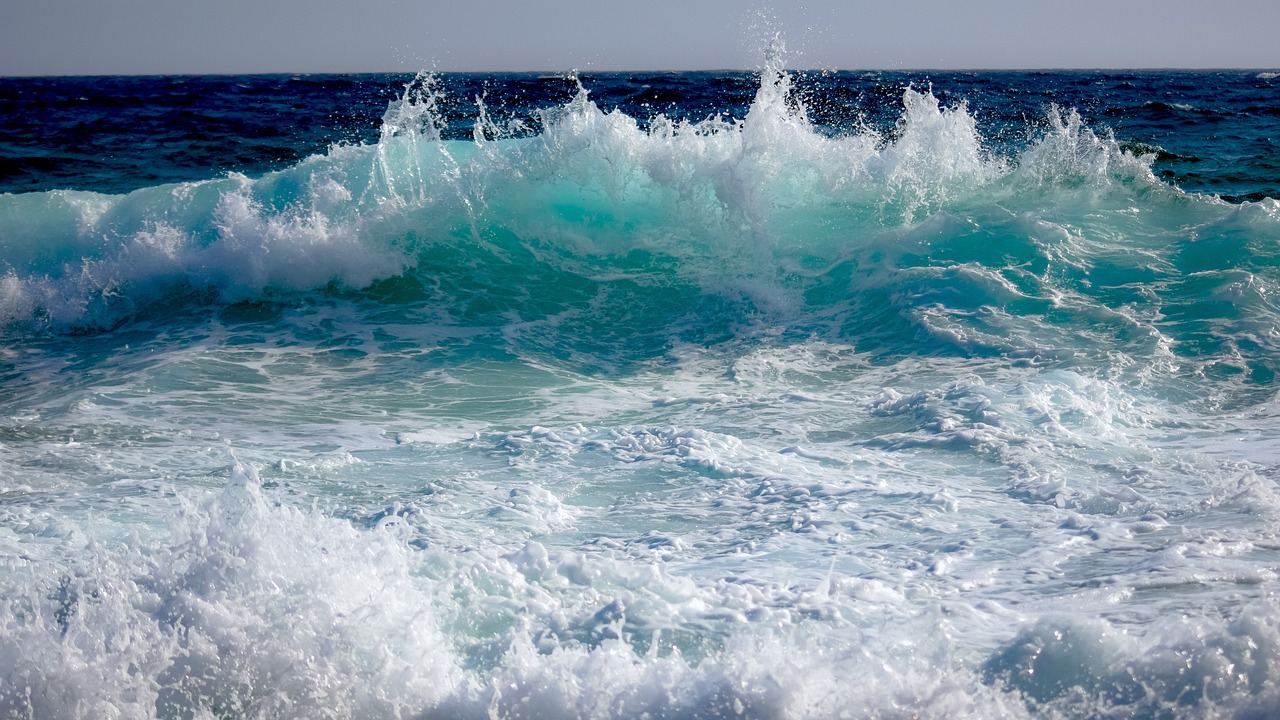
Public Engagement Initiatives
Public engagement initiatives are vital in the fight against ocean pollution. They act as a bridge connecting communities to the ocean, fostering a sense of responsibility and stewardship among individuals. Imagine a world where every person feels a personal connection to the ocean; that's the vision these initiatives strive for. One of the most impactful ways to engage the public is through community-driven activities such as beach clean-ups. These events not only help to remove debris from our shores but also raise awareness about the persistent issue of ocean pollution. It's an opportunity for families, friends, and neighbors to come together and make a tangible difference.
Moreover, workshops and informational sessions can play a crucial role in educating the public about the importance of marine ecosystems. These gatherings can cover a variety of topics, from the impact of plastic waste on marine life to sustainable practices that individuals can adopt in their daily lives. By providing resources and knowledge, these initiatives empower people to take action. For instance, a local workshop might teach participants how to reduce their plastic consumption or how to properly recycle materials, making them more conscientious consumers.
Additionally, social media campaigns have emerged as a powerful tool for public engagement. Through platforms like Instagram and Facebook, organizations can reach a wider audience, sharing stories, facts, and calls to action that resonate with followers. A viral post about the effects of ocean pollution can spark conversations and encourage people to participate in local events or adopt sustainable practices. The beauty of these initiatives lies in their ability to mobilize individuals and create a community of ocean advocates.
To illustrate the impact of public engagement initiatives, consider the following table that highlights various activities and their outcomes:
| Activity | Outcome |
|---|---|
| Beach Clean-Up | Removal of debris, increased community awareness |
| Workshops | Education on sustainable practices, empowerment of participants |
| Social Media Campaigns | Wider reach, increased participation in local initiatives |
In conclusion, public engagement initiatives not only serve to clean our oceans but also cultivate a culture of environmental responsibility. They inspire individuals to take ownership of their impact on marine ecosystems, leading to a collective effort toward a cleaner, healthier ocean. The more we engage, the more we realize that protecting our oceans is not just a task for environmentalists; it’s a shared responsibility that involves everyone. So, why not get involved? Join a local initiative, spread the word, and be part of the solution!
1. What are public engagement initiatives?
Public engagement initiatives are community-driven activities designed to raise awareness and encourage participation in ocean conservation efforts. They include beach clean-ups, workshops, and social media campaigns aimed at educating the public about the importance of protecting marine ecosystems.
2. How can I participate in these initiatives?
You can participate by joining local beach clean-up events, attending workshops, or engaging with social media campaigns focused on ocean conservation. Many organizations welcome volunteers and provide opportunities for community involvement.
3. Why are public engagement initiatives important?
These initiatives are crucial because they foster a sense of responsibility and connection to the ocean among individuals. By educating the public and encouraging participation, they help create a collective effort to combat ocean pollution and protect marine life.
4. Can social media really make a difference?
Absolutely! Social media platforms can amplify messages, reach a broader audience, and inspire action. Viral campaigns can lead to increased awareness and participation in local initiatives, making a significant impact on ocean conservation efforts.
Frequently Asked Questions
- What are biodegradable materials and how do they help reduce ocean pollution?
Biodegradable materials are substances that can break down naturally over time, unlike traditional plastics that linger in the environment for hundreds of years. By using biodegradable alternatives, we can significantly reduce the amount of waste that ends up in our oceans, minimizing harm to marine life and promoting a healthier ecosystem.
- How do marine waste collection technologies work?
Marine waste collection technologies include autonomous drones and specialized vessels designed to efficiently gather plastic and debris from the ocean. These innovations utilize advanced tracking and collection methods to target polluted areas, helping to protect marine habitats and keep our oceans clean.
- What are floating barriers and why are they important?
Floating barriers are structures placed in ocean currents to capture and contain plastic waste. They play a crucial role in preventing the spread of debris and facilitating targeted clean-up efforts in polluted regions. By intercepting waste before it disperses, these barriers help to maintain healthier marine environments.
- What strategies are used for deploying floating barriers?
Effective deployment strategies involve placing floating barriers in high-traffic areas where ocean currents and debris accumulate. This ensures maximum impact in waste collection, allowing for more efficient clean-up operations and better protection of marine ecosystems.
- How do innovative recycling solutions contribute to cleaner oceans?
Innovative recycling solutions transform ocean plastics into valuable materials, promoting a circular economy. By converting waste into reusable resources, we reduce the demand for new plastic production, which in turn helps to protect marine environments and reduce pollution.
- What are eco-friendly fishing practices?
Eco-friendly fishing practices aim to minimize bycatch and overfishing, ensuring the sustainability of fish populations. Techniques such as using selective fishing gear help protect non-target species, allowing for sustainable fishing that supports both local economies and marine biodiversity.
- How does community-based management of fisheries work?
Community-based management empowers local fishermen to adopt sustainable practices by involving them in decision-making processes. This fosters a sense of stewardship over marine resources, promoting long-term ecological balance and sustainable fishing practices.
- Why are awareness and education campaigns important for ocean conservation?
Awareness and education campaigns are vital for informing the public about ocean pollution and encouraging eco-friendly behaviors. By raising awareness, these initiatives inspire individuals to take action, contributing to cleaner oceans and a healthier planet.
- What role do school programs play in marine conservation?
School programs focused on marine conservation educate young generations about the importance of protecting our oceans. By instilling a culture of environmental responsibility from an early age, these programs help foster future advocates for marine conservation.
- How can I get involved in public engagement initiatives for ocean conservation?
You can participate in public engagement initiatives like beach clean-ups, workshops, and community events. These activities not only help reduce pollution but also build a collective commitment to preserving marine ecosystems, making a positive impact on our oceans.



















